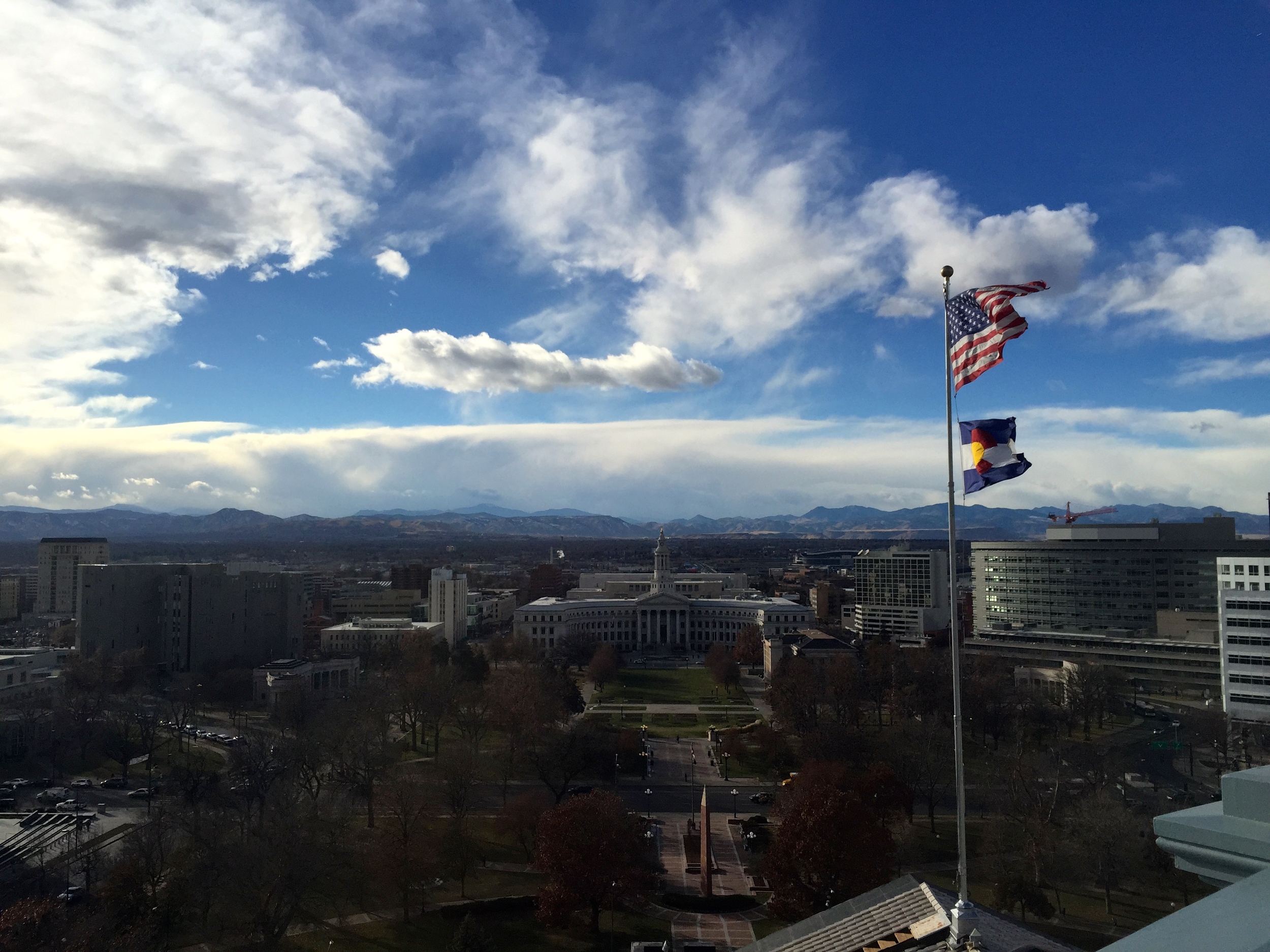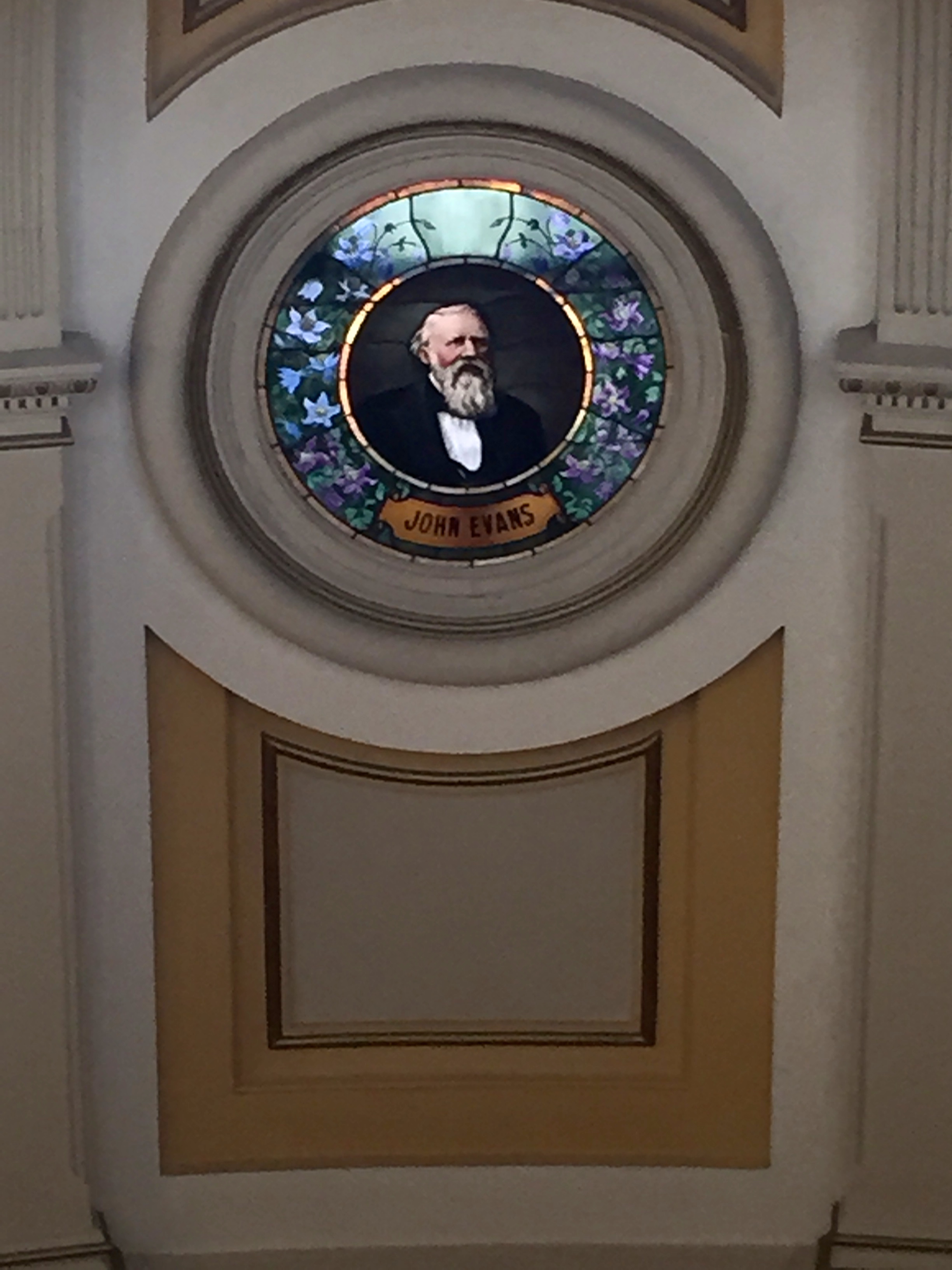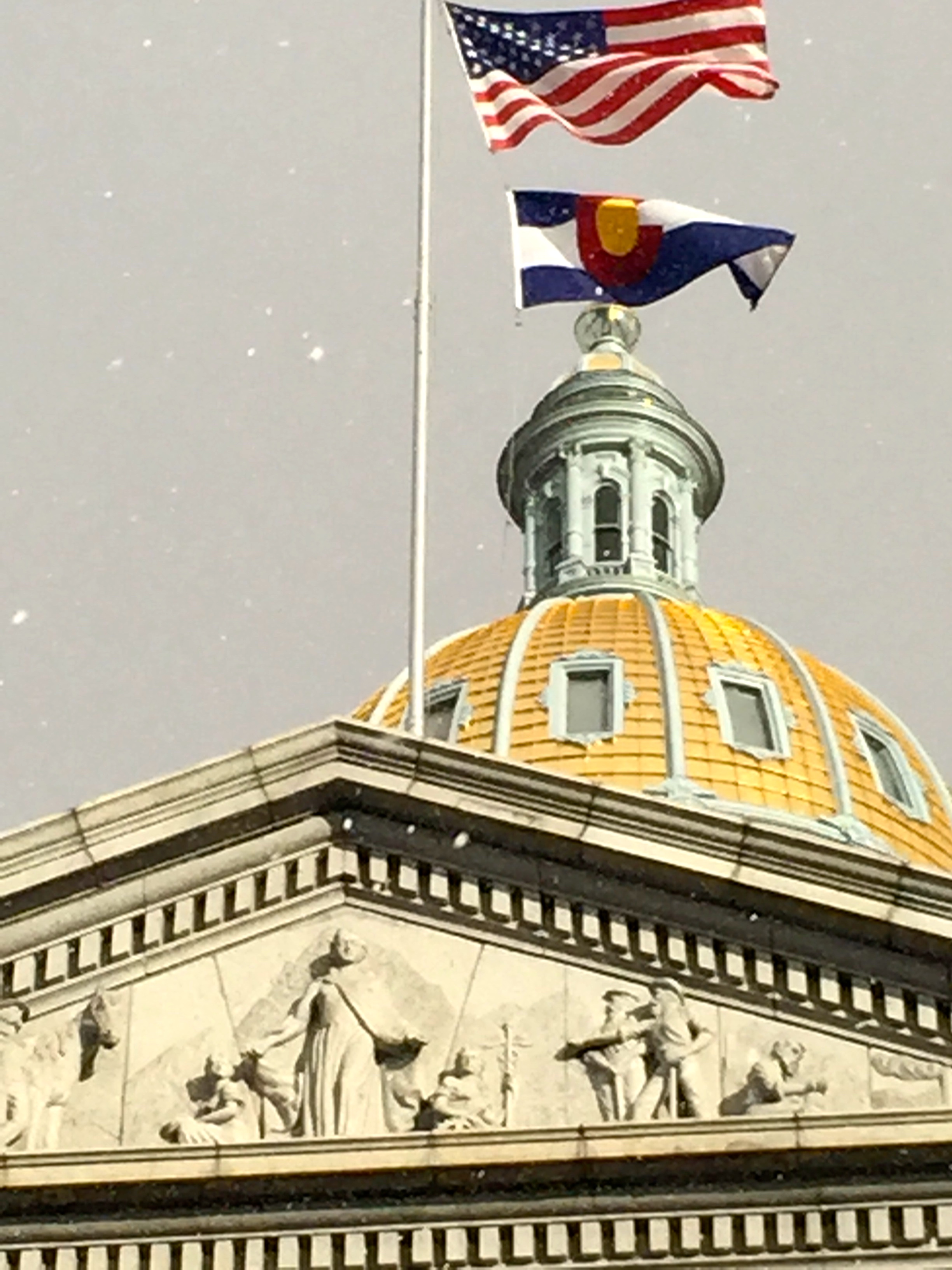Under the Dome
/The Colorado State Capitol
In 1890 a 20-ton block of Colorado white granite settled into place on the corner of Lincoln and Pennsylvania streets, the site that would soon become the home of the Colorado State Capitol. Four years later, the legislature finally moved in to occupy the grand building modeled, by architect Elijah Myers, upon the federal capitol building in Washington, DC. The building has since stood proudly, bearing witness to the history and daily life of the state's past 120 years.
I hopped on the bus outside my house for an afternoon of civic contemplation and exploration in Colorado's center of government. About a dozen or so others (including Finns and Peruvians!) joined the tour group for a quick 20-minute circuit through the historic building. We started in the West Wing, home of the governor's office, where current brewer-turned-governor John Hickenlooper conducts the business of Colorado. Contentious issues under recent debate have focused on gun control (in the wake of the Aurora theatre shooting) and natural gas and energy exploration in the state, especially the practice of fracking. From Governor's wing we entered into the 18-story tall central dome of the capitol. On the first floor, eight historic mural panels by one of my favorite Western painters, Allen Tupper True, line the circular room, each one depicting an important aspect of the relationship between humans and water in the west.
The bottom of the rotunda is a great vantage point from which to see the materials used to engineer the state capitol, many of which tell unique Colorado stories. The floors, fashioned from Yule marble, was mined from the aptly named town of Marble, Colorado, and is the same stone selected to construct the Lincoln Memorial in Washington, DC. Ornamented pillars and fixtures throughout the building use brass to add some luster to the decor. Rose onyx wainscoting lines the corridors and was mined outside Pueblo in the south of the state. It is so rare that all of the known deposit was used up in the construction of the capitol. The upper portion of the capitol, including the girdings of the dome high overhead, uses iron. The dome itself, composed primarily of copper, is plated in gold leaf - about $120,000 dollars of the stuff with a tissue paper-thinness of 1/800 of an inch! Re-gilded in 2013 using just 4 pounds and 11 ounces to cover the entire surface, the locally-mined gold traveled to Utah and Italy for expert purification and milling before returning to grace the dome.
Our group ascended the grand staircase to the second floor where we peeked inside the Old Supreme Court, a room of warm crimson walls and dark wood. No longer a judicial space, the room is now dedicated to various legislative committee hearings that are always open to the public. We next viewed the floor of the House of Representatives but did not enter as passage is restricted only to sitting members. Proceedings here can be publicly viewed, however, from the galleries above. In the rotunda space on the 2nd floor of the capitol is the Hall of Presidents where original portraiture of our country's top elected executives ring the room. Each image was painted by the same artist until his death in 2003, when the torch passed to another artist.
A narrow stairwell climbs from there to Mr. Brown's Attic, site of the Capitol Museum with wall displays presenting the chronology, history, and cultural identity of the state capitol building. The attic is named for Henry Cordes Brown a prominent Colorado businessman of the time who donated the property on which the capitol was built. He also built the nearby Brown Palace Hotel, another Denver landmark. My favorite aspect of the modest museum is the John Glendenin painting, "The Confluence" that shows the initial settlement of Denver at the confluence of Cherry Creek and the South Platte River. But the highlight of the tour, if one is of stout enough heart and muscle, is the 99-stair climb through the insides of the capitol tower to the observation deck in the dome. Standing on the catwalk ringing the inside the dome, I surveyed 16 stained glass likenesses of influential Coloradans in the Colorado Hall of Fame, an odd place for this tribute considering the effort required to view the display. Above the ring, tall windows display the state of Colorado outside. Views stretch west to the highest 14ers of the Front Range and East across broad plains. It also gives a one-of-a-kind view of the nearby downtown Denver skyline.
The tour leader left our group to enjoy the views on our own and to find our way safely back to the main halls of the capitol. I spent some time wandering the corridors again to snap pictures and admire the architecture. At the bottom of one of the stairwells, I found a door unintentionally propped open that led into the sub-basement of the capitol building. Stepping cautiously into the old stone halls I knew I shouldn't be in this area of the capitol and imagined the guard stations and closed circuit cameras in the building all sounding the alarm that an intruder had breached the defenses. But no one came running. I walked tentatively into the low-ceilinged hall and recalled a recent ghost story shared by local historian Phil Goodstein during a recent Halloween evening walk in Downtown Denver. Legend has it that Felipe and Vivian Espinosa, a pair of outlaw brothers, terrorized Coloradans in frontier San Luis Valley back in the 1860s, murdering dozens of pioneers. Then-governor John Evans was so angry with the brothers that he placed a bounty on their heads- which were summarily obtained bv a bounty hunter. The heads were presented to Governor Evans, pickled in alcohol, and stored in the sub-basement where they eventually vanished. Employees working after-hours now report seeing the floating heads in the steam tunnels below the capitol. Others describe hearing the sound of echoing hoofbeats galloping up and down the rotunda stairs as the headless ghosts of the Espinosa brothers search for their decapitated heads.
I moved slowly down the underground hall, growing anxious that I might get lost and suddenly find myself face to head with one of the Espinosas! Thankfully I quickly found a doorway that exited to a recessed alcove on the east side of the capitol building. Outside now, I wandered back around to the west side where the official mile-high marker is placed on one of the capitol steps. Finishing my tour of the building here I felt that the experience had provided me with a richer sense of place and a better understanding of the old and new history of Denver and Colorado. There is already a fascinating collection of stories and surprises to be found at the state capitol. And without a doubt, new stories and surprises will be found in the years to come under that shining golden dome.
Your Turn
The Colorado State Capitol tours are free of charge and the building is open from 7:30 AM until 5:00 PM on weekdays. Tours happen each hour on the hour between 10:00 AM and 3:00 PM. The building is closed on weekends and legal holidays. For more detailed contact information and other aspects of the tours, click here. Parking can be difficult to come by near the capitol as it is either reserved for legislators or metered for a limited time. Consider parking on the west side of the 16th street mall area and taking the free 16th Street MallRide to the Civic Center area and the Colorado State Capitol. Other points of interest in the area include the Central Library, the Denver Art Museum, The US Mint, and the Molly Brown House.
P&P Extra
After the tour, browse for more local history at Capitol Hill Books on the corner of Colfax and Grant, a local institution with a broad selection of used books about Denver and Colorado. Thumb through your new purchase at the Shish Kabob Grill , located kitty-corner to the bookshop, while munching a gyro sandwich and guzzling a Mexican Coca-cola.








